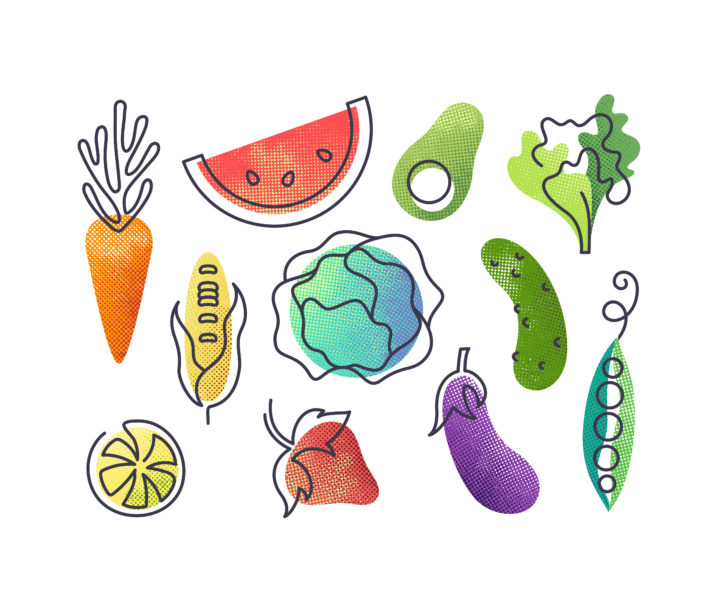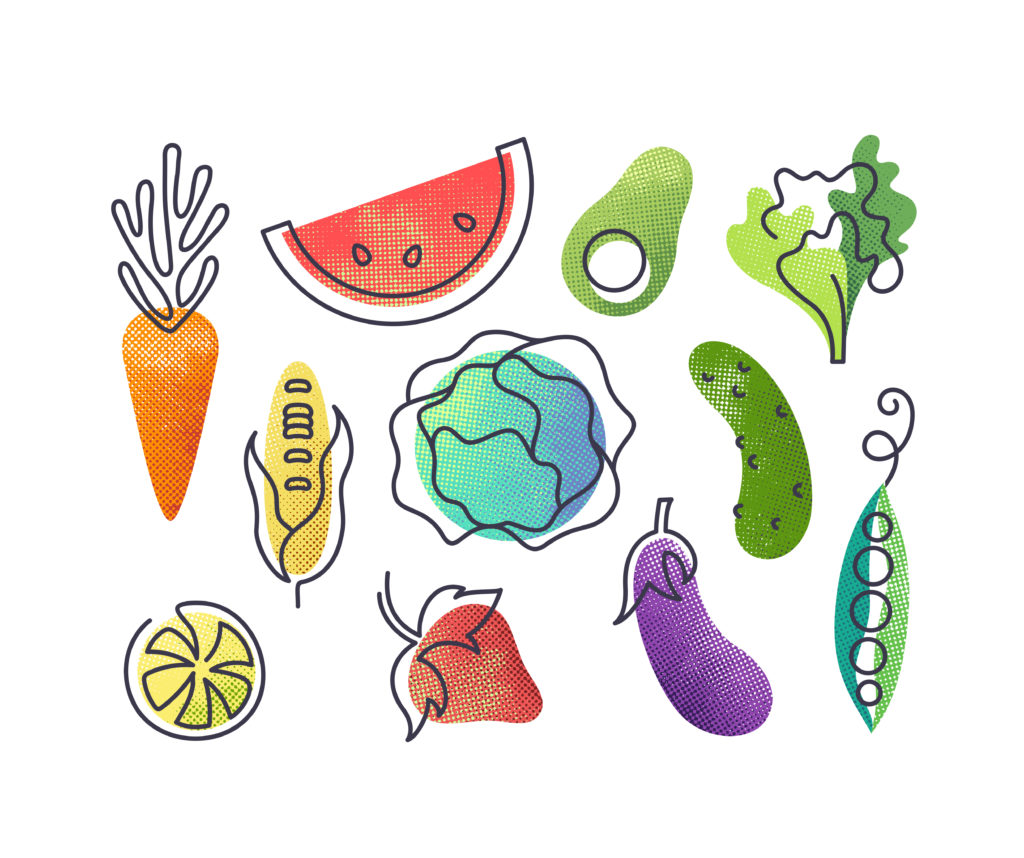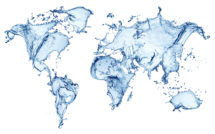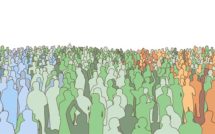
Taxes, Bans, & Burgers: Global Food Policy and Obesity Prevention

This is part of our Campus Spotlight on the University of North Carolina at Chapel Hill.
More countries across the globe are implementing policies to combat poor diet, obesity, and co- morbidities. This seminar will explore an array of regulatory options available to prevent obesity, including front-of-package labeling, taxation, marketing bans, portion size bans, SSB bans, and others. We will examine the social, political, and ethical context of how individuals make decisions about what to eat; how this context shapes the implementation of food policy; and how these policies in turn shape individual behavior and health, by employing a comparative framework over three countries/regions (China, Latin America, and the US). We will also examine how and why food policies diffuse and interact across countries and regions.
For each country, we will first explore the underlying epidemiology of the health problem (obesity, diabetes, cardio-metabolic disease) and the dietary patterns contributing to this problem. We will then explore the underlying social structures, historical events, and ethical and public health frameworks that have shaped the country’s food environment and policy climate, as well as how individuals make decisions about food within those environments. We will also address the types of evidence required to implement food policy as well as measurement techniques for measuring the effects of food policy on food purchasing and intake.
This interdisciplinary class will draw upon readings from epidemiology, health policy, ethics, economics, anthropology, and sociology to address key elements of obesity preventive food policies in the US and across the globe.
Learning objectives: The course is designed for students to:
- Gain familiarity with the nutrition transition and global epidemiology of obesity and cardio- metabolic disease.
- Become acquainted with emerging global food policies and their potential effects on obesity and chronic disease
- Understand ethical frameworks for food policies, as well as the implications of these frameworks for policy implementation and effect on diet and disease
- Identify research strategies required to evaluate the diet and health impacts of these policies
- Develop independent thinking, practice critical evaluation and synthesize evidence across disciplines
- Understand the interaction of individual, society and state with regards to food policy, dietary behavior and health
This course assumes students have a working knowledge of the global nutrition transition, including individual behavioral and dietary factors as well as changes in food systems, as well as determinants of obesity and related cardio-metabolic risk. For a refresher, please review the following articles before the start of class:
- Popkin, B.M., Hawkes, Corinna. The sweetening of the global diet, particularly beverages: patterns, trends and implications for diabetes prevention. Lancet Diabetes Endocrinol, 2015.
- Popkin, B.M., et al. Synthesis and implications: China’s nutrition transition in the context of changes across other low- and middle-income countries. Obes Rev, 2014. 15 Suppl 1: p. 60-7.
- Corvalan C, et al. Nutrition status of children in Latin America. Obes Rev, 2017. 18(s2):7-18.
- Rivera, J. A., S. Barquera, T. González‐Cossío, G. Olaiz and J. Sepulveda (2004). “Nutrition transition in Mexico and in other Latin American countries.” Nutrition Reviews 62: S149-S157.
Dates and readings
Jan 16—ONLINE- Introduction & Overview: Framing Global Food Policies
- Hawkes, C., et al., Smart food policies for obesity prevention. The Lancet, 2015.
- Gortmaker, S. L., B. Swinburn, D. Levy, R. Carter, P. L. Mabry, D. Finegood, T. Huang,
T. Marsh and M. Moodie (2011). “Changing the Future of Obesity: Science, Policy and Action.” Lancet 378(9793): 838-847.
Jan 23—IN PERSON- Introduction & Overview part 2: Framing Global Food Policies
- Barnhill, A., K. F. King, N. Kass and R. Faden (2014). “The value of unhealthy eating and the ethics of healthy eating policies.” Kennedy Inst Ethics J 24(3): 187-217
- Barnhill, A and King, Katherine F. Ethical Agreement and Disagreement about Obesity Prevention Policy in the United States. International Journal of Health Policy and Management 2013:1(2),117-120.
Recommended (these are short letters/responses to the 2nd Barnhill Article):
- Buchanan, D. (2013). “Ethical Standards to Guide the Development of Obesity Policies and Programs Comment on “Ethical Agreement and Disagreement about Obesity Prevention Policy in the United States”.” International journal of health policy and management 1(4): 313.
- King, K. F. and A. Barnhill (2014). “Fairness and respect in obesity prevention policies: a response to David Buchanan.” International journal of health policy and management 2(1): 49.
Jan 30—ONLINE- What foods and beverages should be regulated? Debating the merits of regulating foods vs. nutrients. vs. levels of processing
- Scrinis and Monteiro 2017 PHN. Ultra-processed foods and the limits of product reformulation.
- Gibney 2017 2017 AJCN: Ultra-processed foods in human health: a critical appraisal
- The PAHO nutrient profiling model: http://www.paho.org/hq/index.php?option=com_content&view=article&id=11662&Itemid= 41739&lang=fr
Feb 6.—IN PERSON- Obesity Prevention Policy: What is the Role of the Media?
- Donaldson E. Advocating for Sugar-sweetened beverage taxation: a case study of Mexico. http://www.jhsph.edu/departments/health-behavior-and- society/_pdf/Advocating_For_Sugar_Sweetened_Beverage_Taxation.pdf
- Schwartz M, et al. Association of a Community Campaign for Better Beverage Choices with Beverage Purchases From Supermarkets. JAMA Intern Med. 2017.
- Buckton CH, et al. Media representation of sugar and sugar sweetened beverage consumption in UK newspapers: implications for public health policy. Lancet 2017. (NOTE: This is an abstract.)
SKIM:
- She took on Colombia’s soda industry: then she was silenced: https://www.nytimes.com/2017/11/13/health/colombia-soda-tax-obesity.html
FEB 13—ONLINE-Latin America: Exporting Obesity
- Clark, S. E., C. Hawkes, S. M. Murphy, K. A. Hansen-Kuhn and D. Wallinga (2012). “Exporting obesity: US farm and trade policy and the transformation of the Mexican consumer food environment.” International journal of occupational and environmental health 18(1): 53-64.
- Perez- Escamilla R et al. “Prevention of childhood obesity and food plicy in Latin America: from research to practice.” Obesity Reviews 2017.
SKIM:
- A Nasty, Nafta-related Surprise: Mexico’s soaring obesity: https://www.nytimes.com/2017/12/11/health/obesity-mexico-nafta.html
- How Big Business got Brazil Hooked on Junk food: https://www.nytimes.com/interactive/2017/09/16/health/brazil-obesity-nestle.html
Feb 20—ONLINE- The One Child Policy: interaction of policy, family, and individual diet/disease
- Flurry, A., Veeck, A. Children’s relative influence in family decision making in urban China. J Macromarketing, 2009. 29(2):145-159.
- Faure, G. O. and T. Fang (2008). “Changing Chinese values: Keeping up with paradoxes.” International Business Review 17(2): 194-207.
Recommended:
1. Jingxiong, J., U. Rosenqvist, W. Huishan, T. Greiner, L. Guangli and A. Sarkadi (2007). “Influence of grandparents on eating behaviors of young children in Chinese three- generation families.” Appetite 48(3): 377-383.
FEB 27—IN PERSON- China: the intersection of individual, policy and state—an example from tobacco. Guest lecturer: Kurt Ribisl, Health Behavior
Readings
- Fong GT, Sansone G, Yan M, Craig L, Quah AC, Jiang Y. Evaluation of smoke-free policies in seven cities in China, 2007–2012. Tobacco Control 2015;24(Suppl 4):iv14-iv20.
- Huang L-L, Thrasher JF, Jiang Y, Li Q, Fong GT, Chang Y, et al. Impact of the ‘Giving Cigarettes is Giving Harm’campaign on knowledge and attitudes of Chinese smokers. Tobacco control 2014:tobaccocontrol-2013-051475.
- Zhang J, OU JX, BAI CX. Tobacco smoking in China: prevalence, disease burden, challenges and future strategies. Respirology 2011;16(8):1165-1172.
***For the Zhang article, you may skim all except the sections “Tobacco Control Measures and Challenges” and “Barriers to Tobacco Control”.
***For the Fong and Huang articles, pay special attention to the methods used and think about whether these are strong methods for evaluating these types of policies. We will discuss these types of strategies later in the semester as they apply to food! In preparation for discussion, for each of the policies listed below, please think about a) whether this strategy has worked so far to reduce smoking in China and b) given what you know about China’s nutrition transition and food culture, would this policy work to reduce unhealthy food and beverage intake?
- Front-of-package warning labels
- Taxation
- Mass media campaign to educate about the harm
- Smoke-free zone (for the food question, imagine a sugary-beverage or junk food free- zone in schools or other public domains)
(Note that restrictions on advertising are another common strategy but not covered by these articles).
March 6—IN PERSON- Sugary Beverage Taxes. Guest lecturer: Shu Wen Ng
- Brownell, K. D., T. Farley, W. C. Willett, B. M. Popkin, F. J. Chaloupka, J. W. Thompson and
D. S. Ludwig (2009). “The public health and economic benefits of taxing sugar-sweetened beverages.” New England journal of medicine 361(16): 1599-1605.
- Colchero MA, Popkin BM, Rivera JA, Ng SW. In Mexico, Evidence Of Sustained Consumer Response Two Years After Implementing A Sugar-Sweetened Beverage Tax. Health Affairs. 2017 March;36(3): 564-571.
- SKIM:
Global sugary beverage tax policies: http://www.wcrf.org/int/policy/nourishing-framework For reference:
- Silver LD, Ng SW, Ryan-Ibarra S, Taillie LS, Induni M, Miles DR, et al. Changes in prices, sales, consumer spending, and beverage consumption one year after a tax on sugar-
sweetened beverages in Berkeley, California, US: A before-and-after study. PLoS Med. 2017;14(4):e1002283.
March 13th- No Class, spring break
March 20—ONLINE- Science for Food Policy Part 1: Evaluating Food Policy using Natural Experiments
- Mytton, O.T., D. Clarke, and M. Rayner, Taxing unhealthy food and drinks to improve health. BMJ, 2012. 344.
- Taillie LS, Grummon AH, Fleishhacker S, Grigsby-Toussaint D, Leone L, Capsi C. Best practices for using natural experiments to evaluate retail food and beverage policies and interventions. Nutriion Reviews, 2017. 75(12):971-989.
SKIM:
- Sanchez-Romero et al. Projected Impact of Mexico’s Sugar-Sweetened Beverage Tax Policy on Diabetes and Cardiovascular Disease: A Modeling Study. Plos Medicine 2016.
March 27—IN PERSON- Science for Food Policy Part 2: Food Industry Interference, Science for Advocacy, and Reducing Bias in Research
- Kearns et al. PLos Biology 2017. Sugar industry sponsorship of germ-free rodent studies linking sucrose to hyperlipidemia and cancer; a historical anlaysis of internal documents.
- Bes-Rastrollo M. Financial Conflicts of Interest and Reporting Bias Regarding the Association between Sugar-Sweetened Beverages and Weight Gain: A Systematic Review of Systematic Reviews. PLoS medicine;10(12)
SKIM:
- Spyware’s odd targets: backers of Mexico’s Soda Tax: https://www.nytimes.com/2017/02/11/technology/hack-mexico-soda-tax-advocates.html
April 3—Online- Changing Diets through Changing the Food Supply: Reformulation and Unintended Consequences
- Spiteri M. Food reformulation and nutritional quality of food consumption: an analysis based on households panel data in France. European journal of clinical nutrition 2017.
- Borges et al. Artificially Sweetened Beverages and the Response to the global Obesity Crisis. Plos Med 2017
For reference:
- Clapp J, Scrinis G. Big Food, Nutritionism, and Corporate Power. Globalizations 2017;14(4):578-595.
***Submit ONE paragraph on final project ideas.
April 10—In Person- Guest Discussant: Francesca Dillman Carpentier. Restricting Food Marketing: Why do it and feasibility across countries
Food marketing
- Cairns, G., K. Angus, G. Hastings and M. Caraher (2013). “Systematic reviews of the evidence on the nature, extent and effects of food marketing to children. A retrospective summary.” Appetite 62: 209-215.
- Witkowski, T. H. (2007). “Food marketing and obesity in developing countries: analysis, ethics, and public policy.” Journal of Macromarketing 27(2): 126-137.
- SKIM:
World Cancer Research Fund International. (2015). Read section on restrict food advertising and other forms of commercial promotion. http://www.wcrf.org/int/policy/nourishing- framework/restrict-food-marketing.
April 17—Online- Socio-economic status and sugary beverages: do vulnerable subpopulations require different policies?
- Brownell, K. D. and D. S. Ludwig (2011). “The Supplemental Nutrition Assistance Program, soda, and USDA policy: who benefits?” Jama 306(12): 1370-1371.
- Pomeranz, J. L. and J. F. Chriqui (2015). “The Supplemental Nutrition Assistance Program: Analysis of Program Administration and Food Law Definitions.” Am J Prev Med.
- French SA. Financial incentives and purchase restrictions in a food benefit program affect the types of foods and beverages purchased: results from a randomized trial. The international journal of behavioral nutrition and physical activity;14(1).
For reference:
- Basu, S., H. K. Seligman, C. Gardner and J. Bhattacharya (2014). “Ending SNAP subsidies for sugar-sweetened beverages could reduce obesity and type 2 diabetes.” Health Affairs 33(6): 1032-1039.
April 24—In Person- Front-of-package food labeling, Guest Discussant: Marissa Hall, PhD
- Cecchini M. Impact of food labelling systems on food choices and eating behaviours: a systematic review and meta-analysis of randomized studies Impact of food labelling. Obesity reviews.17(3):201-10.
- Bollard T, Maubach N, Walker N, Mhurchu CN. Effects of plain packaging, warning labels, and taxes on young people’s predicted sugar-sweetened beverage preferences: an experimental study. Int J Behav Med. 2016;13(1):95.
For reference:
World Cancer Research Fund International. (2015). Section on nutrition label standards. http://www.wcrf.org/int/policy/nourishing-framework/restrict-food-marketing.
Nestle, M. and D. S. Ludwig (2010). “Front-of-package food labels: public health or propaganda?” JAMA 303(8): 771-772.
FINAL PROJECT DUE BY FRIDAY, MAY 4 at NOON (Email to instructor)
Lindsey Smith Taillie is a nutrition epidemiologist whose work focuses on evaluating food policy efforts in the US and globally, and how these influence disparities in diet and obesity. Current projects focus on evaluating sugary beverage taxes, front-of-package warning labels, and marketing restrictions in a number of Latin American countries, including Chile, Mexico, Colombia, Brazil, and Peru. See her most recent articles on Google Scholar.
Photo: Vegetarian halftone textured and monoline symbols | Shutterstock
Published on June 11, 2019.




